The Chinese cross-border eCommerce market is a huge opportunity for marketers and brands. China’s Cross-Border e-Commerce industry is experiencing rapid development, but it still faces many challenges, such as Chinese government regulations being strict, intense competition, entry barriers, and so on.
This post will be about how to best explain the top Cross-Border eCommerce platforms that you could use for your business. We will consider in this list only B2C sites, which therefore eliminate the iconic Taobao, which has long beaten the American giant eBay in the Chinese market.
What is cross-border e-Commerce?
The fundamental difference between China’s Cross-Border e-Commerce and continental e-Commerce is that for Cross-Border, the objective is to export the product from its country to deliver it directly to the end consumer. Cross-border eCommerce is a great development for foreign trade in China.
For this purpose, different e-Commerce platforms are used such as Tmall and JD Global, RED, Kaola, or VIP International. Thanks to this type of e-Commerce in China, the delivery is done directly, so there is a saving of time: with a delivery which is done in 10 days to three weeks.
There is also a gain in the cost of shipping. We see that the way people use Chinese differs depending on the commercial platforms they use, for example:
- On a Cross-Border platform: Best-selling cross-border products are maternity products such as baby formula. Imported goods benefit from a better reputation. The bestsellers on Cross-Border platforms are therefore often vitamins, birth products, high-end cosmetics, or simply products that they cannot find in their country.
- On a traditional Chinese e-Commerce platform: Users buy their everyday consumer products such as food, spirits, wine, or even hygiene and household products.
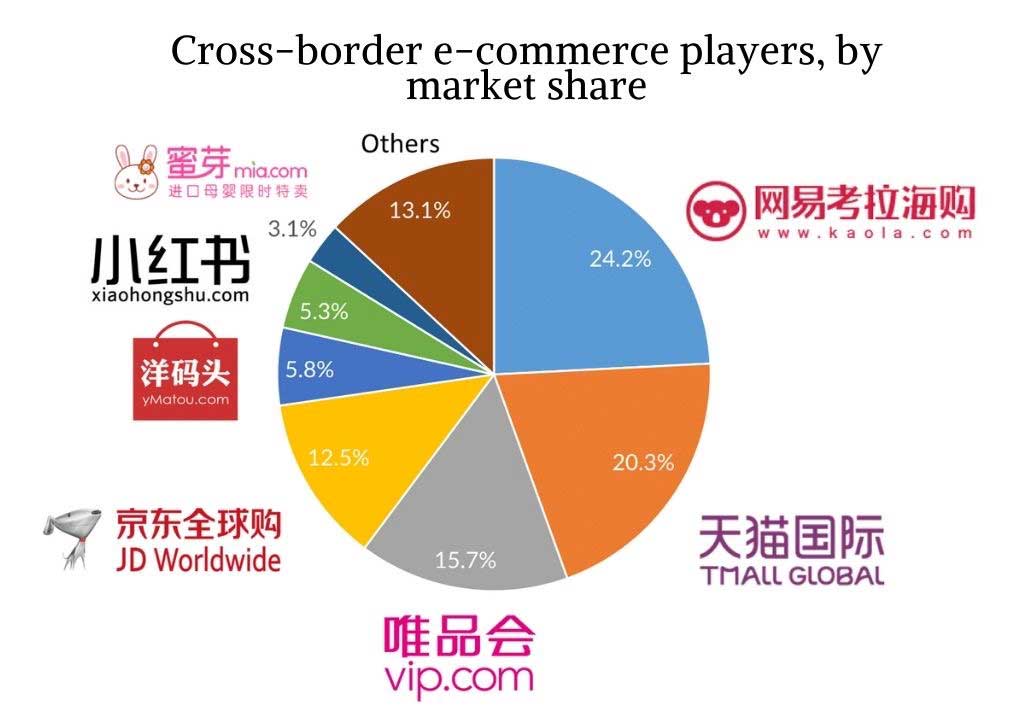
What is the advantage of doing cross-border e-Commerce in China?
Cross-Border e-Commerce has many advantages for foreign companies wishing to do business in China. All the decrees issued between 2010 and 2014 have indeed created a call for air for Western businesses by offering them the following advantages:
- Exemption from registration of trademarks and their products in China.
- Exemption from product labeling in Chinese.
- Flat-rate taxation is up to 3x slower than the taxation of the general regime.
- Product export to free trade zone such as Shanghai, then shipped into the country
- Although cross-border shipped products still need to follow customs regulations, the process for Customs clearance is facilitated
To benefit from these benefits, the sale of goods must be a “real” B2C transaction, that is, sending the package directly to the consumer after the latter has placed the order on a cross-border website.
New more favorable developments for foreign brands have applied since January 1, 2019:
- The purchase limits per consumer have been considerably increased.
- The state has clarified the responsibility of the actors involved (foreign brands, e-commerce platforms, service providers, etc.).
- The State has extended the “Bonded warehouse” which greatly shortened delivery times.
More generally, cross-border e-Commerce makes it possible to:
- When products are inlaid on Cross-Border platforms, the conversion rate is generally lower. Buying China is, therefore, easier: the Chinese buy more easily.
- A good strategy to test your product on the market and refine your offer to create the best product-market fit.
- The predisposition to certain types of products can be an advantage and a challenge depending on what your company offers.
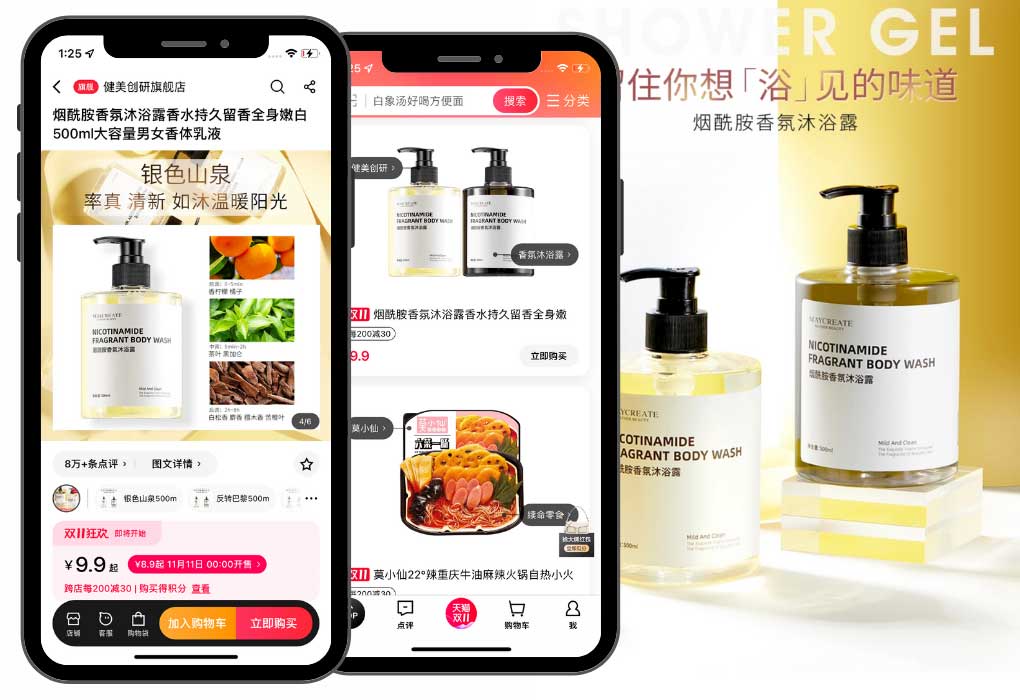
Cross-border eCommerce in China with Tmall Global
Launched in 2014 by the giant Alibaba Group, Tmall Global is the international version of China’s leading online marketplace: Tmall. It is the largest domestic B2C online platform in China. The cross-border e-commerce platform enables businesses to sell directly to millions of buyers throughout China.
As an open platform marketplace, Tmall provides the infrastructure to host your storefront and unfiltered access to hundreds of millions of shoppers.
More than 25,000 international brands are registered on the platform, in more than 92 countries. It’s the 6th most used online store in China, and 65% of Chinese customers use its app on their smartphones.
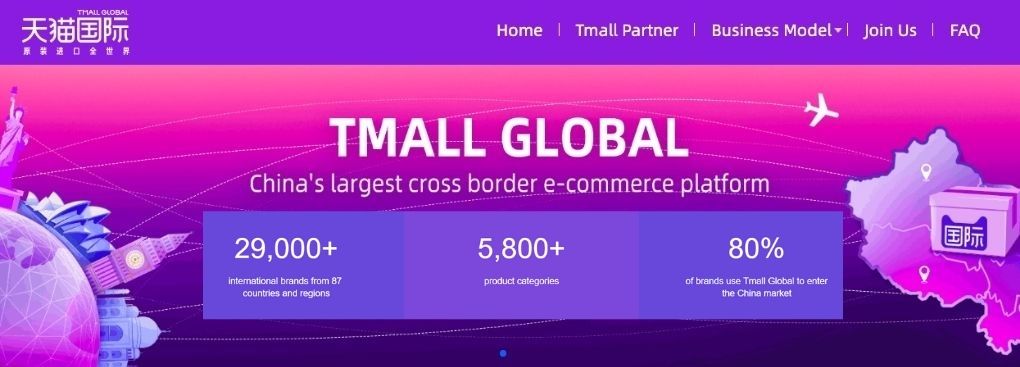
Why should you go with Tmall Global to sell in China?
- The global version of Tmall uses the same infrastructure as Taobao and the Alipay payment system. The Chinese are very familiar with it.
- Tmall only accepts official stores, which ensures the authenticity of products sold online, which ultimately builds customer loyalty.
- Taobao promotes Tmall, and favors it over all other platforms, which avoids traffic to Tmall.
- Tmall has very powerful analysis tools. Analyzes and sales reports are updated daily, which allows the seller to adapt his strategy if necessary.
- The mobile internet browser company UCWeb was acquired by Alibaba. Now, the new version of the browser includes the possibility for customers to log in with a Taobao account. UCWeb users will enjoy special treatment including special offers, Taobao credits, and a lottery system.
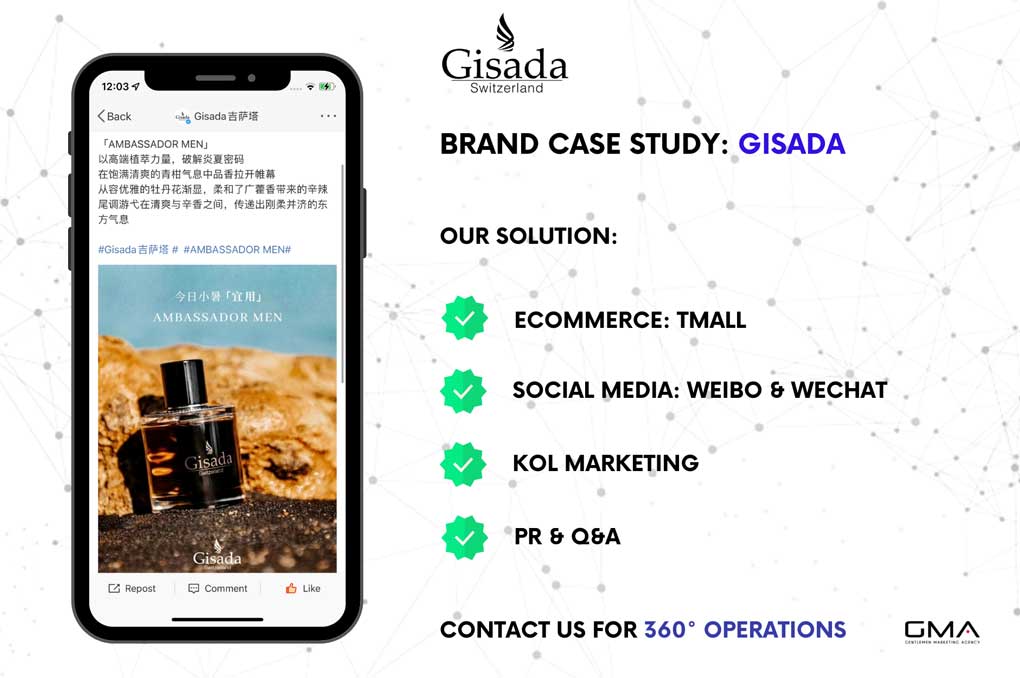
Tmall Global Features and tools for marketers:
- The CPC: There are bidding on keywords entered on Tmall based on cost per click.
- Banner ads: These banners are available on the home page to indicate which brands are sought after on Tmall. These banners are therefore only available for flagship stores.
- CPM Banner Advertising: The cost per mile is a unit used to measure the cost of purchasing advertising space on the Internet. There are many places ads can be displayed, for example, the shopping cart level, the home page, page categories, and message announcements.
- CSP: It’s affiliate marketing. This type of marketing is performance-based, whereby a business rewards one or more affiliates for each visitor or customer brought in by its own marketing efforts.
- Emailing: This is the method of sending emails or messages to a targeted consumer segment and therefore potential customers. This selection is based on certain criteria, such as demographic criteria, for example.
- Juhuasan: It’s a Tmall-specific flash sale channel that allows you to promote.
- Faxian: It is a platform dedicated to Tmall which is similar to the concept of Pinterest.
- SEO on Tmall: It is a good reference to the content posted for the promotion of its product. This referencing allows it to be well classified and therefore more visible to the app users.
How to start selling with Tmall Cross-border e-commerce?
List of requirements to become a merchant on Tmall Cross-border:
- Products originating in a foreign country and sold internationally must be inspected by Tmall Global Security and passed through Chinese customs.
- The product overview page must be in Chinese, use the international size and measurement system, and finally provide customer service in Chinese.
- Logistics services must ship the product within 72 hours after ordering online.
- It is often preferable to choose direct delivery or delivery through certified warehouses in China.
- Order tracking for all products is mandatory.
- The after-sales service must have premises in China to handle returns.
It is also better, but not required, for your business to have:
- More than 2 years of practice in eCommerce
- A brand that works in B2C with an international market
- Own your brand or authorized agencies
- Be part of favored sectors, such as clothing for pregnant women and babies, care products, clothing, shoes, and accessories.
Type & Process to register to open a Tmall Global Merchants Stores:
- The main store: Is reserved only for registered brands.
- The Specialty Store: This is for sellers who have authorization documents giving them the right to distribute their products in China without geographic restrictions.
- Monopoly store: This is for merchants who own two or more brands in the same product category on Tmall.
Cross-border E-Commerce on JD Worldwide
JD Worldwide is JD.com’s cross-border e-commerce platform, enabling Chinese customers to purchase products from other countries with the ease and convenience they have come to expect from JD.com. Like its Alibaba counterpart, it operates as an online shopping center where the organization hosts foreign brand stores.
JD Global sources directly from brands and suppliers and sells them directly to customers through the company’s website and mobile channels. JD can be considered the biggest B2C market in China and dominates the in-home appliance and consumer electronics field.
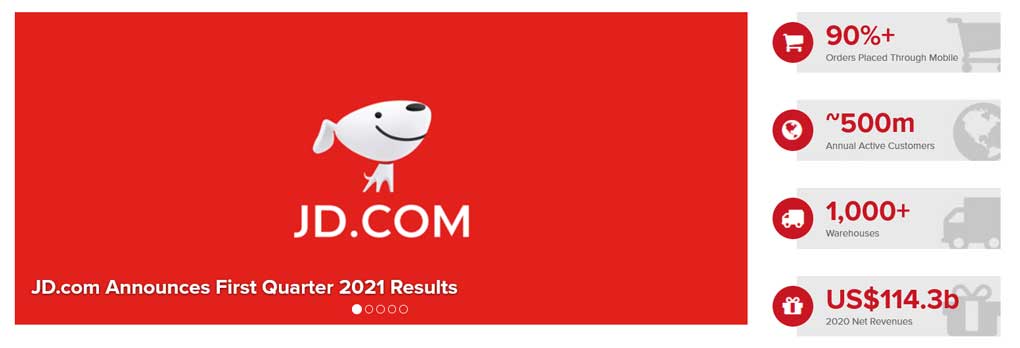
Why should you go with JD Worldwide to do cross-border e-commerce in China?
Just like Tmall, JD is a trusted eCommerce marketer in China, and when it comes to choosing between the two if you decided to start your China journey with cross-border eCommerce, simply know that the JD global platform is as good as Tmall.
If in terms of quality of services and feed, JD and Tmall are particularly similar, JD is particularly suitable for traders who wish to sell household appliances and consumer electronics. JD has all the tools in place to offer a smooth experience to your customers, and you won’t have to worry about the complicated processes to be able to sell in China cross-border (Identity checking, for instance).
JD Worldwide features and tools for marketers:
- Banner ads on the different pages of the website
- Pay-per-Click: this method consists of using sponsored links which are most often ads in the form of text, placed near the search results. The advertiser pays for each click of the Internet user.
- It is possible to find the most trendy products based on the SEO referencing page of the JD.com website.
- Promotions are displayed on the main page.
- There is a coupon system to have money on the site.
- Pay to appear on the JD recommendation page.
These solutions are great to get traffic to your online store, but not necessarily optimum for an acquisition strategy. Moreover, advertising in China requires a different approach from what we are accustomed to, especially on Chinese e-commerce platforms such as JD.com, indeed we would suggest that you go for an Omnichannel strategy.
How to start selling on JD Worldwide?
List of entry requirements to become a merchant on JingDong Worldwide:
- Be an established non-Chinese company.
- A brand owner, or at least license a brand. Thus, you must be able to provide trademark registration documents or licensing agreements.
- Have a USD bank account.
- You should not have already launched your products in China.
- Provide business registration documents and the ID of the major shareholders and directors.
- Chinese customer service must be provided and the product details page should be written in Mandarin.
- Products must be dispatched within 72 hours after order placement.
- Product return centers must be available in China.
Types & processes to register open a JingDong Worldwide store:
- For a Brand Flagship Store: For this type of store, the products must be registered abroad. The seller must provide a certificate of registration for these products. And, he must be an authorized exclusive reseller to prove this, he must provide the trademark certificate and a letter of authorization to sell his products.
- Outlet Type Flagship Store: For this type of store, the merchant shall have or have applied for a Class 35 trademark (the “Service Mark”) overseas for its brand. If he is an owner, he must provide his trademark registration certificate. If he is not the owner, he must provide exclusive proof of using or operating a store on the JD global website using the “Service Mark”.
- Franchised Store: Products must be registered abroad. If the seller is not the owner of the products, proof of authorization is required, as explained above.
- Exclusive Store: Proof of the origin of the products is required, as well as invoices for everything that is purchased. Special store types are limited and can only sell a maximum of two product categories. And finally, the name of the store cannot infringe on the legitimate rights of others.
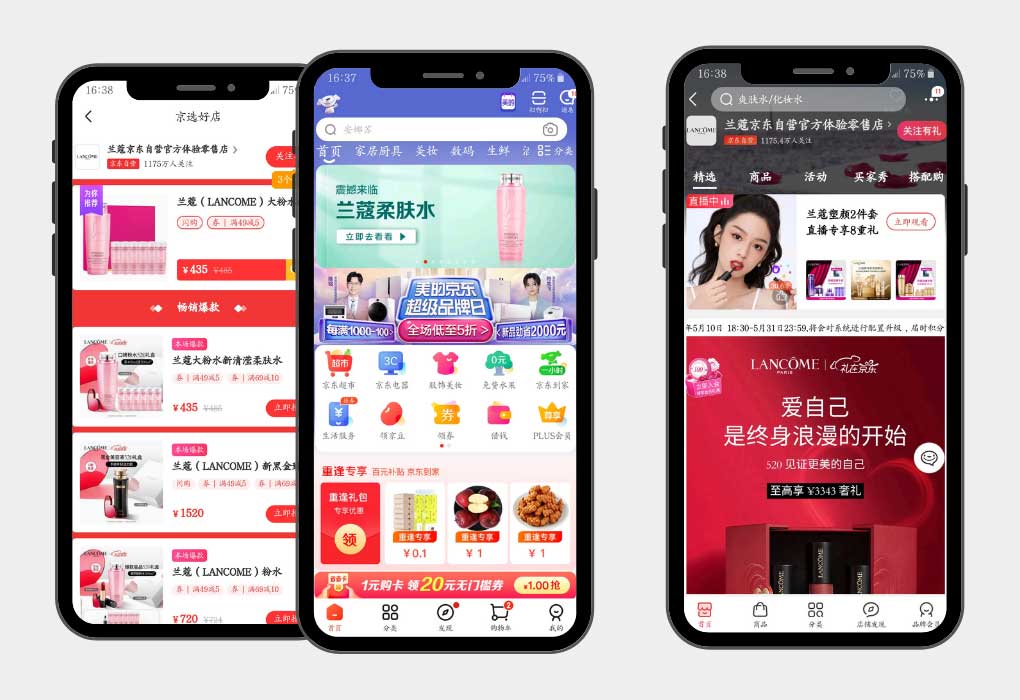
Cross-border with China Social-eCommerce App Xiaohongshu
Xiaohongshu is a Chinese social media app specializing in lifestyle that also verses into eCommerce and cross-border eCommerce that has been growing in popularity in recent years. The app mainly caters to beauty & fashion brands, with a majority of high-end and luxury brands.
It provides its users with a platform to buy products and share shopping tips, and promotional offers. This creates a community of trust sharing the same ideas.

Many brands and retailers believe they should sell their products only on e-commerce platforms such as Tmall, JD.com, and Taobao. But there is a lot of competition in a market that is increasing interest in international brands. It is difficult to stand out.
In addition, it is almost impossible for small brands to gain access to Tmall, for example. You also have to take into account that Chinese society is constantly changing, with sophisticated young Chinese buyers who are difficult to convince if they have never heard of your brand.

RED is very popular with Generation Y and Z. Additionally, 65% of users are young Chinese women who heavily rely on the recommendations of KOLs who are considered real role models. They live in the wealthy cities of the country, a segment of the population with strong purchasing power. These young women are interested in purchasing medium and high-end foreign products.
Why should you go with RED to sell in China?
RED, although a relatively new player; is useful for businesses to develop their marketing as well as their sales. Indeed, it has become one of the best channels for KOL campaigns. It is also one of the social media of choice for luxury brands who want to run marketing campaigns that are a change from the ordinary.
RED is a great word-of-mouth tool. It is one of the most effective ways to improve your online reputation and increase your conversion rate. The budget you will need to invest in RED should be 20% less than that of Weibo, however, the ROI should on average be 40% more than what you would get using Weibo.
RED Features and tools for marketers:
- RED offers display advertising services that have strict conditions. For example, at the level of national advertising regulations prohibit companies from using languages such as: “the best”, “the luxury”, “the high end” etc.
- Pop-up windows appear when you open the Xiaohongshu app. The ad also gives direct access to the brand’s store by pressing a small button at the bottom of the page.
- An integrated advertisement appears in the news: in the discovery and in the following pages. It displays the accounts to which the user is subscribed. Users are notified of publications by a small button at the bottom of the page to the left of the photo, called “Guanggao”, which means “advertisement”.
- There is Fulishe (福利社) which is Xiaohongshu’s self-managed e-commerce app that integrates merchandising, warehousing, and customer service functions to provide users with a seamless e-commerce experience.
- The “Shopping Notes” is a page created to add credibility, sharing, and visibility. It is managed by moderators and is called “Xiaohongshu Editors” (小红 书 出子 人) who are responsible for maintaining transparency regarding product reviews.

How to start selling on RED?
List of requirements to sell on Xiaohongshu:
- Xiaohongshu is a very special app compared to other Western social networks. You must therefore have a verified account on RED, it is necessary if you want to sell your products on the platform.
- The special thing about RED is that individual account cannot open their own stores.
Types & processes to register open a RED store:
To sell your products on RED, you can open your own store or sell your products directly through the platform. However, you will have more advantages by opening your own store in terms of branding, marketing, communication, and control of your activities.
To create your official account: on Xiaohongshu you need:
- You must create an official account by clicking on ‘小红 书 入驻 平台’. You will need to submit your official business documents as well as your bank details.
- After signing up, you will need to wait for approval, which usually lasts three days, before you start publishing and selling your products.
- After signing the user agreement, you will need to complete a series of training modules in order to understand and master all the features of the app.
Checking in on RED can be quite complicated if you don’t understand Chinese. There is a lot of paperwork to fill out in the local language.
What is Kaola & why is it one of China’s biggest cross-border eCommerce apps?
Kaola provides a large range of products in baby and maternal care, healthcare, beauty, and cosmetics, with a fast delivery service. It is also hoping to bring to users a “better lifeless expensive” thanks to low prices.
Kaola provides a marketplace for international brands to sell their products securely to Chinese consumers, and for them to purchase safe, high-quality, and international premium goods in a convenient way.
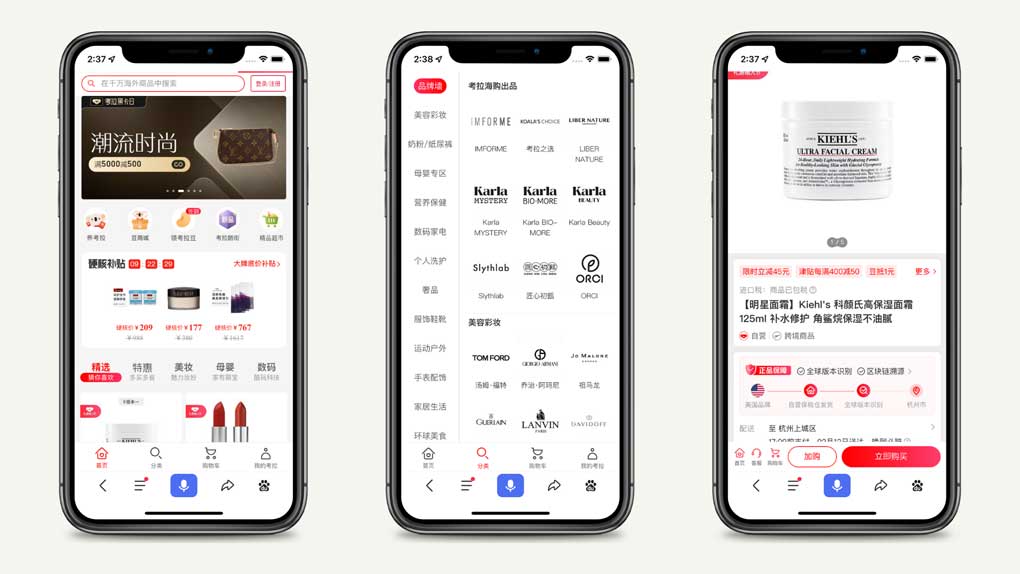
Kaola’s strategy is to set up its branches and offices in nearly 10 countries and regions such as San Francisco, Tokyo, Seoul, Sydney, and Hong Kong to select high-quality products and avoid multi-level links such as agents and distributors, thus reducing costs and cutting off prices.
Moreover, Kaola has more than 150,000 square meters of bonded warehouses in Hangzhou, Zhengzhou, Ningbo, and Chongqing, becoming the largest enterprise with bonded warehouses in cross-border e-commerce.
Why should you go with Kaola to sell in China?
Kaola has set its standards for online shopping through its commitment to quality, authenticity, and the variety of products it offers, covering everything from food, beverage, and apparel to electronics and cosmetics.
According to the below chart from Statista, we can see that Kaola was the most trusted platform among Chinese cross-border buyers, as 38.8% of the respondents were confident in the product’s authenticity.
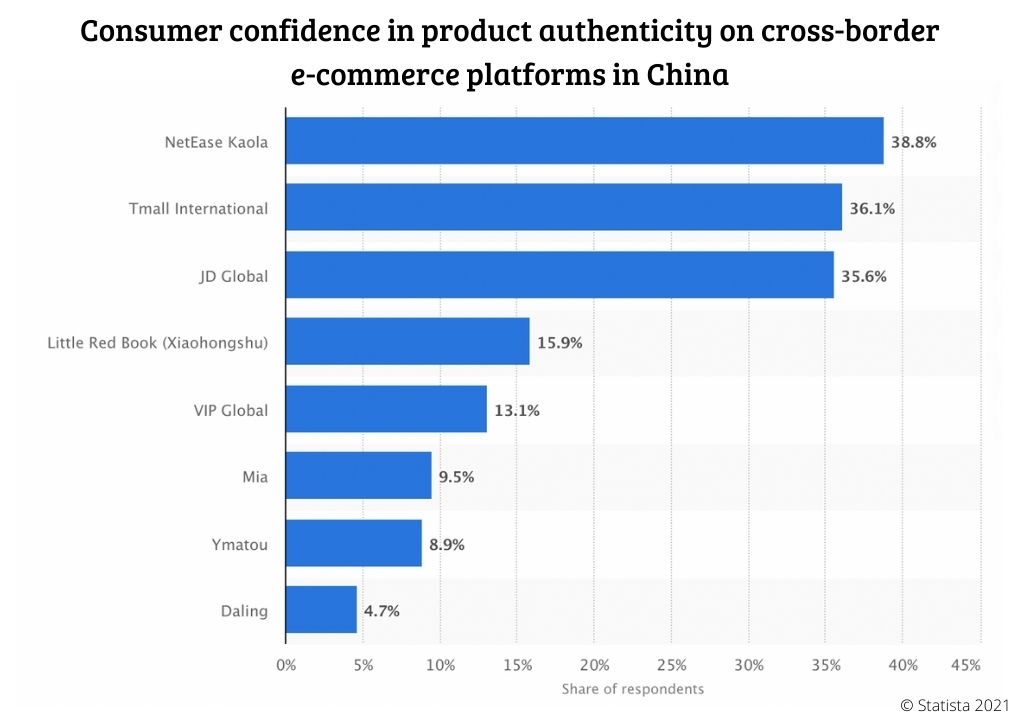
Moreover, we can also insist on the fact that Kaola keeps a strong relationship with international brands and directly purchases most of its inventory from overseas brands, bypassing intermediaries and local distributors to lower costs, thus cutting down costs as well for users.
On the other hand, Kaola provides a one-stop solution for foreign manufacturers to enter China’s complex market. By handling cross-border logistics, warehousing, online operations, and after-sales services, Kaola enables foreign manufacturers to reach the Chinese middle class on a broader and faster scale.
Kaola Features and tools for marketers:
- The traditional tab for purchase with the classification of products
- The best-sellers display
- The search engine
- Kaola also has a tab name “种草社区 Zhong Cao she Qu” which is more like a forum or sharing community.
Zhongcao means in everyday language “to add something on her/his wish list”. We can get advice and feedback about all kinds of products. Kaola focuses on users’ experiences to attract them and encourage them to post reviews about products.
How to start selling on Kaola?
- Before entering the Chinese market, it is highly recommended you register your trademark with the Chinese Trademark Office.
- Then, you will be able to set up your own store or webpage on Kaola but it is advisable to set aside about 20% of projected turnover for a targeted marketing campaign.
- Hire a third party to help you along the application process
- To run the store successfully you will need the services of a third party to handle translations, customer service, returns, and imagery.
In China, the possibility to open a shop on an e-commerce website does not only depend on your motivation but mostly on how your brand appears and the potential, it will have on the chosen platform. If you want to get the opportunity of selling your products on one of the most popular cross-border e-commerce platforms in China, you will need to show what you have to offer, and convince Kaola that your brand has enough potential
Processes to register open a store on Kaola:
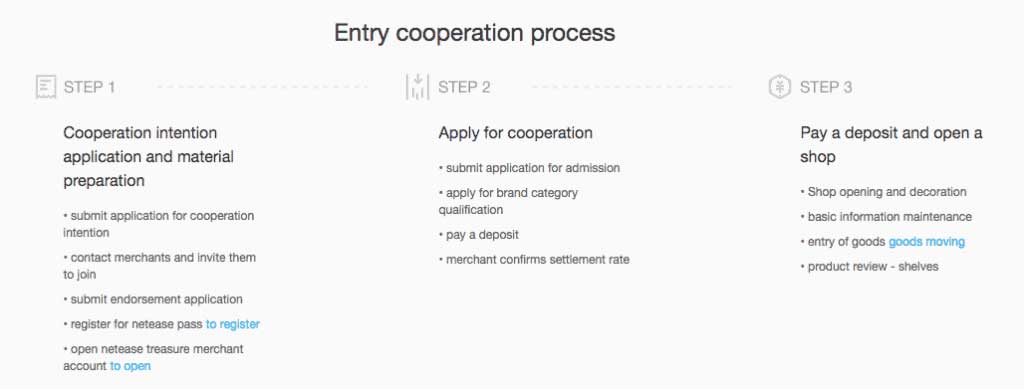
Kaola has grown at an astronomical speed since its inception and offers many opportunities for international companies wishing to sell in China. Today, two methods exist to open a shop there.
- Cooperation in sourcing: This method involves Kaola buying your products directly. To register using this solution, you must apply online. For this, you must give the product category, the name of the company, a description of the company, the company site, the name of the brand, a description of the brand, the brand site, a description of your business model, some major customers, your online store, and your annual sales figures. Finally, you will have to send a contact with a name, an address, an email, and a telephone. After a few weeks of analyzing your profile, the Kaola site will come back to you. You will then receive a letter of offer to complete the registration.
- The flagship store: Thanks to this method, it is possible to sell your products directly without Kaola buying them. You sell directly to users. The information to be provided to register is the same as with the previous method.
Kaola Pricing:
- Initial deposit (refundable): between USD 10,000 – 15,000.
- Commissions/revenue share: between 2.0 – 10.0%
- Yearly cost/product category fee: USD 1000.
Read more about selling on Kaola here
China Cross-border eCommerce with VIP International
Founded in 2008 and based in Guangzhou, VIP Shop International is the third-largest e-commerce company specializing in online discount sales. Following its huge success, it was listed on New York Stock Exchange in 2012.
VIP Shop is specialized in selling high-end fashion, cosmetic, and beauty products, as well as home items at a discounted price. Vipshop mostly uses an in-house logistics network instead of relying on third-party delivery services like Alibaba. That’s why VIP consistently reports lower operating margins than Alibaba.
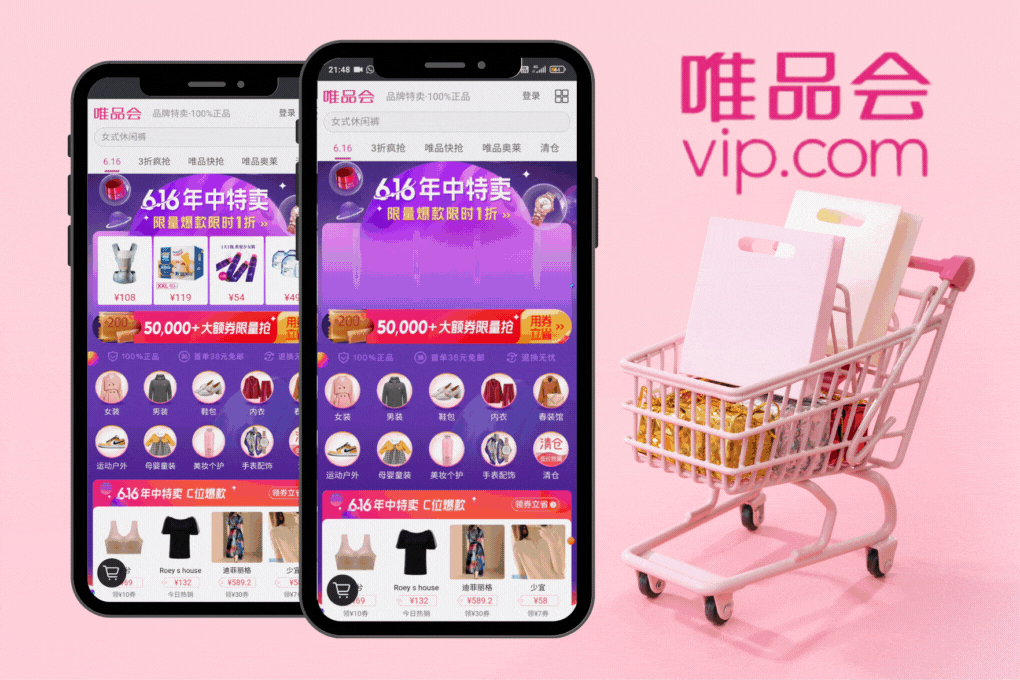
VIP Shop is divided into VIP.com, and VIP International, with warehouses all across China and overseas.
About 80% of buyers are women. In addition, a majority of them were born in the 80s and 90s and live in “smaller” towns, called third and fourth-tier towns. VIP International attracts this type of buyer because they do not have as many physical outlets as large cities such as Shanghai, Shenzhen, or Beijing do.
Why should you go with VIP International to sell in China?
The e-commerce industry in China is booming, and it’s much more common to sell luxury goods via online channels in China than in the West. Vip International has set up professional buyer groups in 11 countries and regions to guarantee the product’s authenticity. It has formed close relations with several consulates and long-term partnerships with well-known brands across the world.
An in-house 24/7 customer service has been set up. Buyers can return goods within 7 days without any explanation. The process will be treated in China, which means that they will quickly receive their refund.
Based on its 12 warehouses overseas and 11 bonded warehouses in mainland China, VIP International has built a sophisticated and flexible logistics network, which enables it to start delivery within 12 hours after orders are received.
Vipshop provides services that help brands manage their sales like WeChat mini-program stores and official Chinese websites.
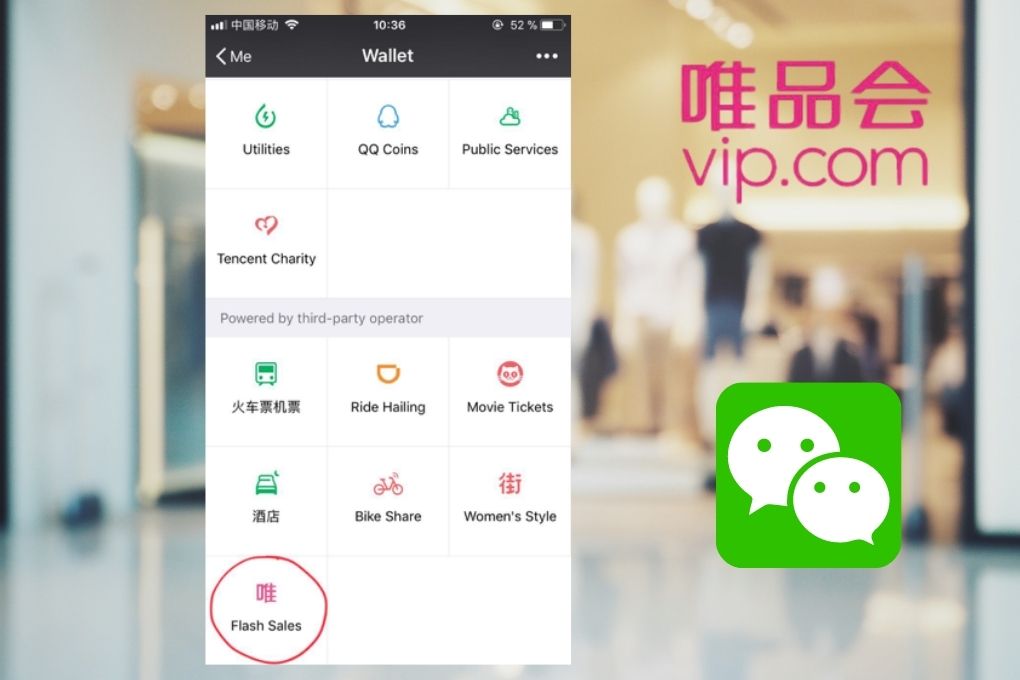
VIP International Features and tools for marketers:
- WeChat Mini-Programs: VIP.com is linked to WeChat, so users clicking on it, do not need to download it, as it works as a mini-program on WeChat. VP.com allows brands to have their mini-program directly through WeChat, which attracts more consumers and increases their sales.
- Chinese domains: Through these Chinese domains, brands can drive traffic to their Chinese websites at the same time as they sell their products on different marketplaces, like Vipshop, Tmall, or JD. Azoya Group, for example, is a Shenzhen-based service provider that can help businesses set up Chinese domains.
- WeChat Pop-Up Stores: In China, pop-up stores are small cashier-less stores where buyers scan a QR code via the WeChat app to enter the store. The pop-up store is seamlessly set up and integrated with the WeChat app.
How to start selling on VIP Int?
List of requirements to start selling on VIP International:
- You can either apply through the VIP Shop website or through Tmall’s partners
- You will need to provide a Chinese entity with several official documents.
- It will take all the information about your business such as the name of the company, the email, the description of your business and your activities, your website, or even the categories of products you want to sell. Then send them via the website and by e-mail to this address: global@vishop.com.
- You will not have to pay membership fees, deposits, and registration fees.
- The waiting process will take about 5 weeks, then you can sign the official contract and download your products online.
- All this process is to be done in the Chinese language.
- Bonus: Develop your online reputation, because the platforms only accept brands that are already known to Chinese consumers. You can use social networks to increase your visibility as with WeChat, Weibo, and RED which were mentioned previously.
Types & Process to register to open a store:
There are two options to start selling on Vipshop or VIP International:
- Work with a TP
- Contact the company directly
Both websites can be selective and a Tmall partner can help you sell your brand. The following information should be included when submitting a request:
- Your company name
- Description of your business
- Company Website
- Product category
Want to get started on China’s Cross-border e-commerce market?
Cross-border e-commerce platforms have grown rapidly and had gradually replaced traditional B2C business models. Today, generations Y and Z have a purchasing power that continues to rise and is hyper-digitalized.
For sellers who wish to export to China, cross-border commerce platforms set less stringent entry standards than other channels so that international companies can benefit from the Chinese market.
Cross Border e-Commerce also allows brands to test the Chinese market to avoid taking too big a risk in the first years by importing alone. Thanks to this test, brands can sharpen their project, gain experience, discover the market, and start to build networks and a customer base.

Contact us today and let’s discuss your project and how we can assist your growth in China with our cross-border eCommerce solution and more. We have experts based in China, Asia, and Europe to help you on your china cross-border journey.
We help you with:
- Social media marketing
- WeChat store development (as well as WeChat pay set up)
- cross border trade, import and customs regulations, and logistics
- Content Creation (blog post/ visual content/ long and short videos and so on)
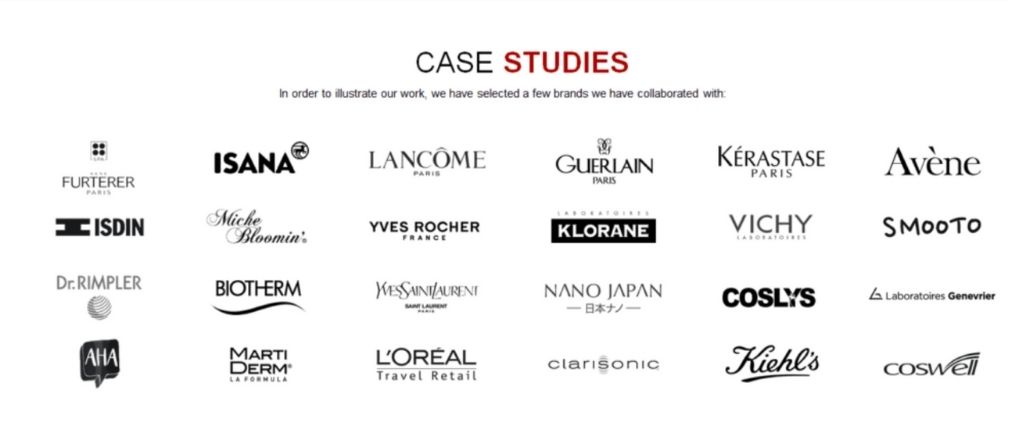


1 comment